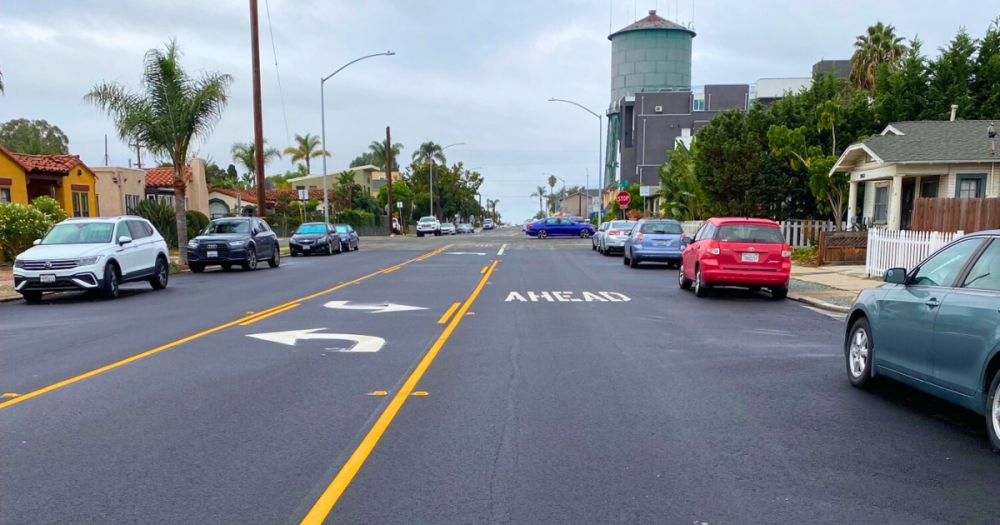Road Repair Projects Continue in Valencia Park, University Heights, Hillcrest, Ridgeview and Emerald Hills

Roads are being repaired in neighborhoods across the City of San Diego as part of the Transportation Department’s ongoing slurry seal program. This week, City crews will continue resurfacing streets in and around Valencia Park, University Heights, Hillcrest, Ridgeview and Emerald Hills with work happening in those locations over the next three weeks.
Preventing the deterioration of streets is vital to improving the overall condition of San Diego’s network of roads. It reduces the need for a more costly asphalt overlay and reconstruction for badly deteriorated streets. Information about different types of street repair can be found on the Transportation webpage.
Slurry seal is often completed in phases over several days or weeks, and multiple slurry seal projects are happening across the City simultaneously. The latest work as part of Slurry Seal Project 2321 will be completed, weather permitting, through the month of October. The following roads will be resurfaced:
- Vermont Street
- Richmond Street
- Georgia Street
- Florida Street
- Alabama Street
- Dwight Street
- Louisiana Street
- Pennsylvania Avenue
- Texas Street
- Dwight Street
- Arizona Street
- 60th Street
- Arnold Avenue
- Nile Street
- Vancouver Avenue
- Trojan Avenue
- Posey Place
- Hixson Avenue
- Nile Street
- Esther Street
- 56th Street
- Madison Avenue
- Bayview Heights Drive
- Fairmount Avenue
- Rexford Drive
- Trailing Drive
- Home Avenue
- Cordrey Court
- Federal Boulevard
- Crenshaw Street
- Tulip Street
- Westgate Place
- 39th Street
- Messina Way
- Vista Horizon Street
- Prairie Mound Court
- Olvera Avenue
- S. 58th Street
- Trinidad Way
- Las Flores Trail
- Churchward Street
- Prairie Mound Way
- Catania Street
- Trinidad Way
- Los Alamos Drive
- San Onofre Trail
- Glencrest Drive
- Palmwood Drive
Slurry seal is a cost-effective pavement preservation method consisting of asphalt emulsion, sand and rock. This mixture is applied to the street surface at an average thickness of a quarter inch and extends the life of already in-good-condition streets.
Streets are selected for resurfacing through a pavement management system that helps determine when to schedule streets. Each street segment is assigned an Overall Condition Index (OCI) score based on the pavement’s roughness and cracks.
To prioritize street paving, the OCI is used in conjunction with other factors, such as traffic volume, road type, equity, climate resiliency, mobility, maintenance history, other construction projects, and available funding. Repairs are often grouped within a neighborhood to include streets in similar conditions or performed after other projects, such as pipeline replacement.
View a map of street repair and other projects in your neighborhood by visiting the City’s interactive Project Finder map.
